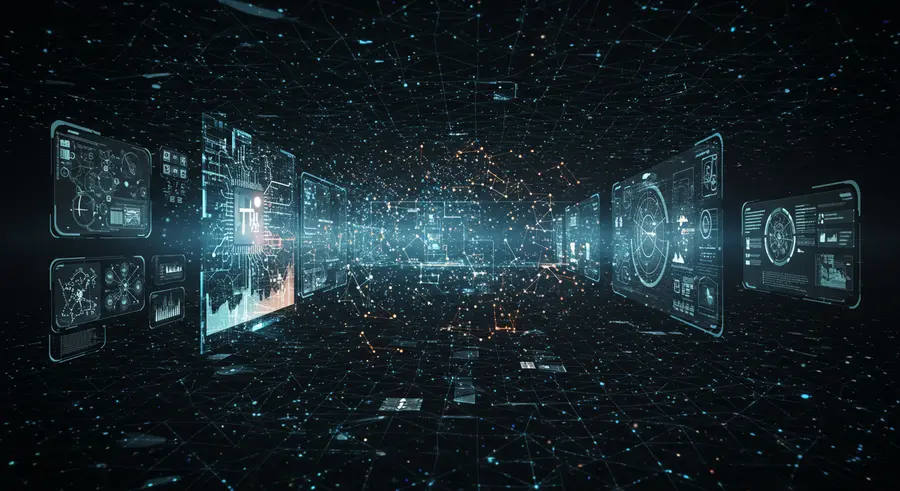AI in Spatial Computing: A Deep Dive into Intelligent Immersion
Unravel how Artificial Intelligence transforms spatial computing, creating smarter, more intuitive, and highly personalized immersive experiences.

The Symbiotic Relationship: AI and Spatial Computing
Spatial computing, at its core, is about merging the digital and physical worlds. While technologies like Augmented Reality (AR), Virtual Reality (VR), and Mixed Reality (MR) provide the canvas for this merger, Artificial Intelligence (AI) provides the brushstrokes – the intelligence that makes these experiences truly dynamic, interactive, and personalized. AI is not merely an additive feature; it is fundamental to the progression of spatial computing, enabling systems to understand, predict, and respond to the physical environment and user intentions in unprecedented ways.
Imagine a smart environment that anticipates your needs, a virtual assistant that understands your gestures, or an educational simulation that adapts its content based on your learning style. These are not distant dreams but immediate possibilities, powered by the continuous evolution of AI algorithms and their integration into spatial platforms. Just as sophisticated algorithms drive the market analysis in modern financial tools, AI empowers spatial systems to make sense of complex real-world data.
Key AI Components Driving Spatial Experiences
Computer Vision: Seeing the World Through Digital Eyes
At the forefront of AI in spatial computing is Computer Vision. This technology allows devices to "see" and interpret their surroundings. From mapping real-world environments (SLAM - Simultaneous Localization and Mapping) to recognizing objects, faces, and even human poses, computer vision provides the foundational data layer. It enables AR applications to accurately place virtual objects on physical surfaces and VR systems to track user movements within their space, ensuring a seamless blending of realities.
- Object Recognition: Identifying and understanding physical objects to enable digital overlays or interactions.
- Scene Understanding: Comprehending the context of an environment, differentiating between a wall, a table, or an open space.
- Gesture Recognition: Interpreting hand movements and body language for intuitive control interfaces.
Natural Language Processing (NLP): Conversing with the Digital World
Beyond visual interaction, NLP allows users to communicate with spatial computing systems using natural language. Voice commands, chatbots within virtual environments, and context-aware digital assistants are all manifestations of NLP. This capability makes spatial interfaces more accessible and intuitive, moving beyond traditional button presses or precise gaze controls.
- Voice Assistants: Interacting with AR/VR experiences through spoken commands.
- Contextual Understanding: AI systems grasping the meaning behind spoken or typed queries within a spatial context.
Machine Learning & Deep Learning: Adaptive and Predictive Intelligence
The vast quantities of data generated by spatial interactions—from user preferences and movement patterns to environmental changes—are perfect fodder for Machine Learning (ML) and Deep Learning (DL) algorithms. These allow spatial systems to learn, adapt, and make predictions. This can manifest as personalized content delivery, predictive user interfaces, or even intelligent agents that anticipate user needs and offer proactive assistance.
For instance, an AR shopping app could learn your style preferences and recommend items that fit your aesthetic, or a VR training simulation could dynamically adjust its difficulty based on your performance. This adaptive intelligence is what truly elevates spatial computing from mere technology to a transformative experience. Learning about financial insights can similarly benefit from predictive models that anticipate market shifts.
Applications of AI in Spatial Computing
The synergy between AI and spatial computing unlocks a plethora of applications across various sectors:
- Healthcare: AI-powered surgical training simulations, AI-assisted diagnosis via AR overlays, and personalized patient experiences in virtual recovery rooms.
- Manufacturing & Design: Virtual prototyping with AI-driven design optimizations, predictive maintenance in digital twins, and AI-guided assembly instructions in AR.
- Education: Immersive learning environments that adapt to student progress, AI tutors within VR classrooms, and historical reconstructions brought to life with intelligent agents.
- Entertainment & Gaming: More realistic AI characters in VR games, adaptive storylines in interactive experiences, and AI-generated virtual worlds.
- Retail: Virtual try-on experiences, AI-powered spatial analytics for store layouts, and personalized shopping assistance in AR.
The Future: Intelligent Spatial Environments
As AI continues to advance, we can expect spatial computing environments to become increasingly intelligent and autonomous. Imagine smart cities where digital information seamlessly integrates with physical infrastructure, offering real-time navigation, environmental data, and personalized services, all orchestrated by AI. The line between the digital and physical will blur further, leading to truly sentient environments that anticipate our needs and enhance our daily lives.
This future demands robust data processing and insightful analysis, akin to the detailed market sentiment analysis required for informed investment decisions. As AI models become more sophisticated and hardware capabilities expand, the immersive potential of spatial computing will only grow, creating a world where technology intuitively understands and augments our reality.
The journey of spatial computing is inextricably linked with the evolution of AI. Together, they are paving the way for a future where our digital interactions are not confined to screens but are interwoven with the fabric of our physical world, creating experiences that are not just immersive but genuinely intelligent.